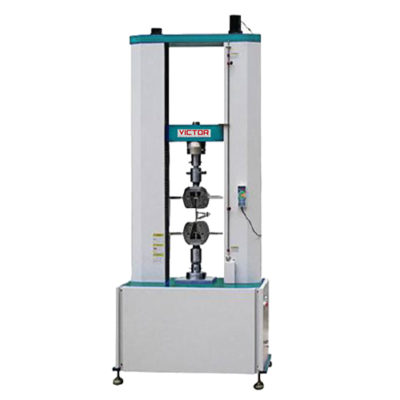ASTM is an international standards organization that is located in the United States of America. The purpose it was introduced to the industry is to publish technical standard agreements for various materials, product, systems and others. Among the ASTM standards that are often use in the industry is ASTM D6775.
ASTM D6775 Test Standard
Description For ASTM D6775
ASTM D6775 is an international test standard design for determining the breaking strength and elongation of textile webbing and similar braided materials. The test is very similar to the Federal Test Method 191A, Section 4108. In this standard, it required webbing capstan grip to run this test.,This grip is widely used for any webbing or strap type textile material.
This test method is limited to materials with a maximum width of 90 mm (3.5 in.) and a maximum breaking strength of no more than 89000 N (20000 lb). Manufacturing industries such as textiles often use this standard. Seatbelts are often test to this standard, as well as any tie-downs that may be use in the shipping and transportation industry. Nowadays, ASTM standards are highly preferred by both corporate or government bodies. In Malaysia, most industries use the ASTM D6775 standard in their companies,The Malaysian government has also adopted this standard.
Basically, ASTM D6775 determine the breaking strength and elongation of textile webbing, tape and braided materials using a specific specimen clamp. ASTM D6775 can be use for acceptance testing of commercial shipments. This test can be perform on using Universal Testing Machine (UTM) and The following are the properties measure through ASTM D6775:
- Breaking Force
- Elongation
Specimens For ASTM D6775
1. Webbing and Braided Textiles
This test method is limited to materials with a maximum width of 90 mm (3.5 in.) and a maximum breaking strength of no more than 89000 N (20000 lb).
Grips For ASTM D6775
1. Webbing Capstan grip
Type of UTM machine
We recommend to use UTM machines with a capacity of 50kN-100kN, it depends on the strength of the materials. We also recommend using a dual-column floor type machine.
1. VEW 2302

VEW 2302 Computer Servo Type Universal Testing Machine is a new material testing machine that combined with the electronic technology and mechanical transmission, it has accurate load speed, range of force measurement, has high accuracy and sensitivity for the load, displacement measurement and control, it also can be test the constant-velocity loading, constant- velocity displacement.
This machine is simple to operate, especially suitable for controlling quality in the production line, this series of machine is mainly apply to test the non-metallic and metallic materials which the load is less than 30ton.
Main Function:
- Mainly apply to test the metallic and non-metallic materials in tension, compression, bending, shear, peel, tear or two-points extensions and others.
- Can be use for materials such as rubber, plastic, wire and cable, optical fiber and cable, safe belt, leather belt composite materials, plastic profiles, waterproof membrane, steel, copper, profiles, spring steel, bearing steel, stainless steel (as well as other high-hardness steel), castings, plate, strip, non-ferrous metal wire.
Test Procedure
- Prepare the specimens as describe in the method (using the full-width of the webbing to be test).
- Once the sample is prepare, load and secure the sample into webbing capstan grips. Gauge length (length of the specimen between grips) is specified in the testing standard.
- Clamp specimen at the top of the grip first then carefully clamp the sample into the bottom grip.
- Make sure the specimen is align.
- The distance between the grips should be 10 inches.
- Zero all the testing machine before starting the test.
- A slight preload may be apply to align the grips and remove slack.
- Apply provisions for measuring elongation, if desired, as describe in the standard.
- Start the test with constant rate until its failure/breaks.
